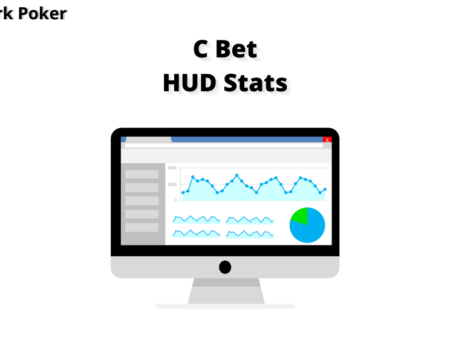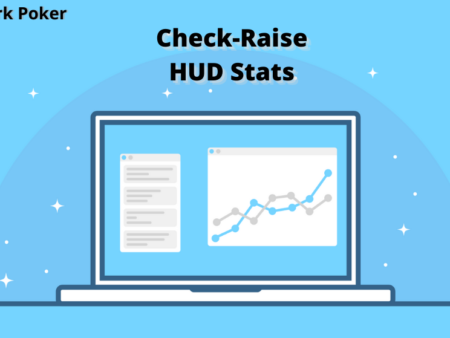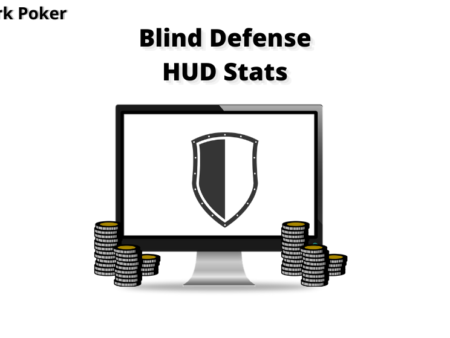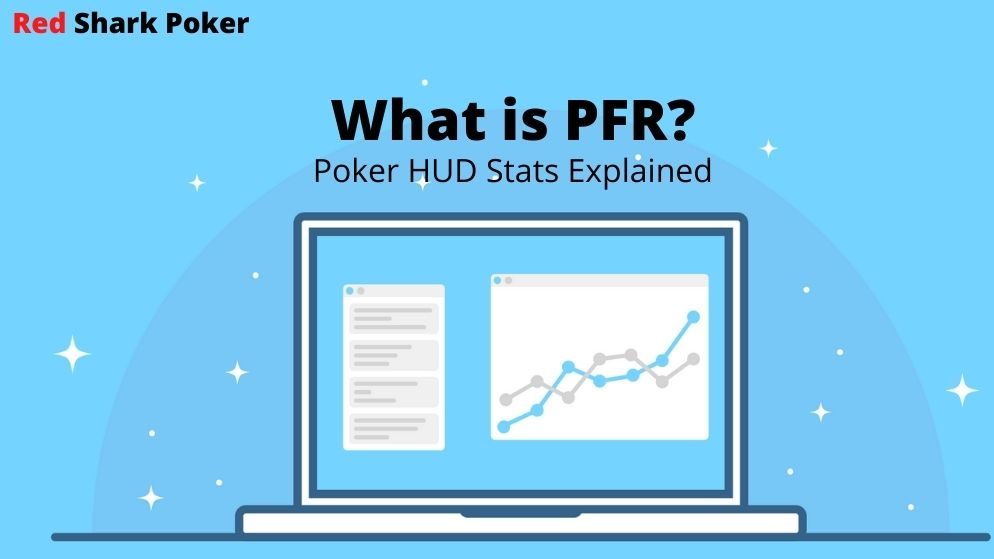
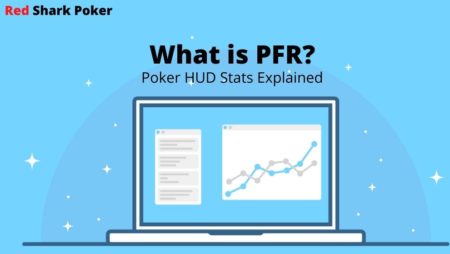
This article is for those poker players who are thinking of using a HUD software. You are a casual poker player who wants to upgrade your skill, we advice you to continue reading to learn new poker strategies about the crucial HUD stats called PFR.
What is PFR?
PFR in poker stands for PreFlop Raise. It is the most important HUD statistics after VPIP. PFR shows how many times a player raises on the preflop. This can be an open raise or a re-raise.
What is the difference between VPIP and PFR?
If you don’t know much about VPIP, we advice you to read our chapter on VPIP in Poker.
PFR is a part of VPIP as raising or re-raising is essentially putting money in the pot voluntarily. However, the basic difference is that VPIP includes both calls and raises on the preflop, and PFR includes only preflop raises.
VPIP = Preflop Calls + Raises
PFR = Preflop Raises
So, PFR shows the percentage of the time when you only raise preflop.
Why do we use PFR in Poker?
VPIP is used to identify a Loose or Tight player. PFR is used to identify a Passive or Aggressive Player.
VPIP helps you to identify – Loose or Tight Player
PFR helps you to identify – Passive or Aggressive Player
How to identify a Passive or Aggressive Player?
The cheat code is to check the gap between VPIP and PFR. If the gap between VPIP and PFR is less, the player is more aggressive. And if the gap is more, the player is more passive.
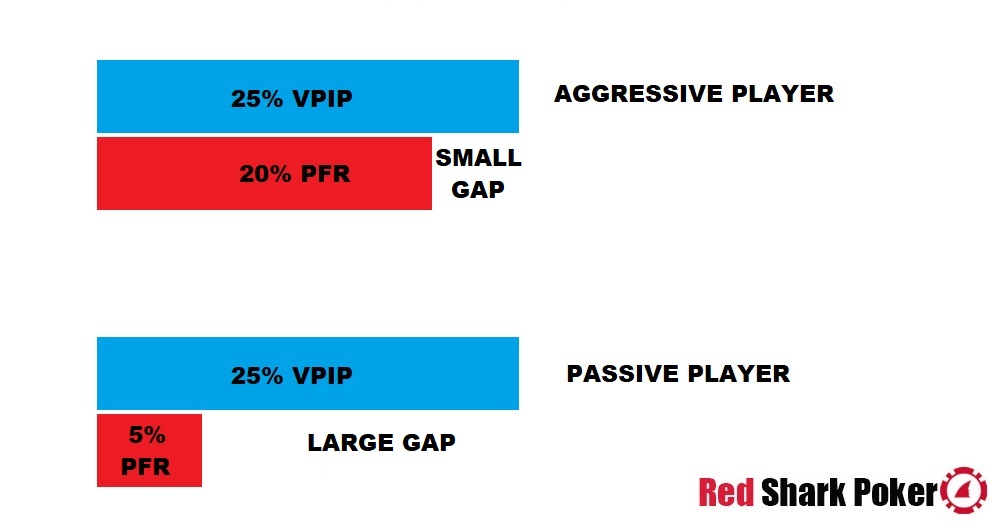
As PFR is a part of VPIP, VPIP stats will always be higher than PFR. It can be the same if you always raise when putting money in the pot preflop.
Four Types of Poker Players
When VPIP and PFR are compared, we get four different types of players. The stats below are for 6-max games. Full ring games will have slightly lesser numbers.
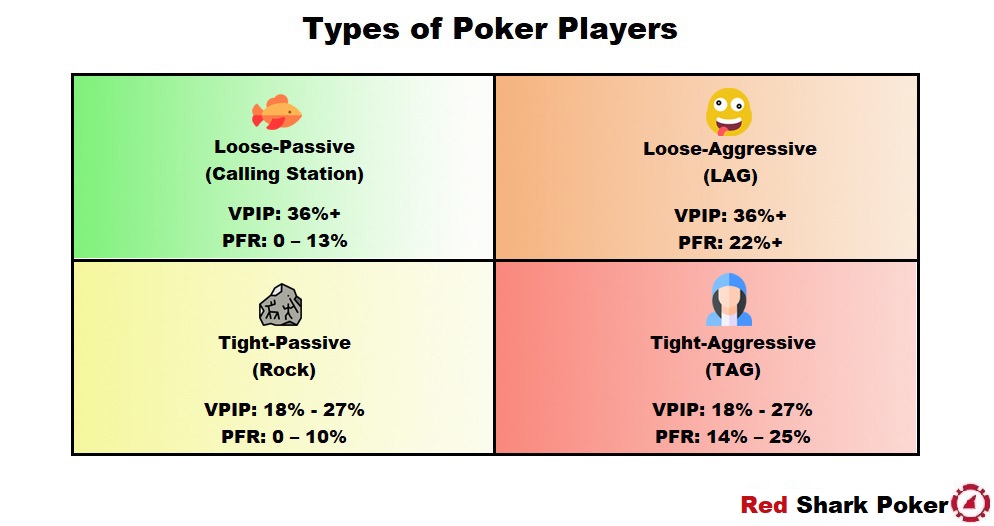
Note: These VPIP and PFR stats may vary from player to player in 6-max games. Also, you should have a sample size of over 100 hands for a reliable read.
Loose-Passive Player: These players are called “Calling Stations” or “Fish”. Their VPIP is usually above 36% and the PFR is in between 0 and 13%. Some common stats of loose-passive players are 42 (VPIP) / 9 (PFR), 38 (VPIP) / 5 (PFR), etc. In general, these players call a lot and rarely raise on the preflop. So, these players usually lose a lot of money and you can extract a lot of money from them when played with the right strategies.
Don’t bluff as these players have the tendency to call. However, you can get the best value if you have the nut hand as they will keep calling. Fold medium strength poker hands if they raise preflop, and fold right away if they show aggression post flop. These players show aggression when they get a piece of the board. So, if you want to play along, you need to have a better hand than theirs.
Loose-Aggressive Player: These players are called “LAGs” or “Maniacs”. Their VPIP is above 36% but they have a high PFR of above 22%. Some common stats of loose-aggressive players would be 42 (VPIP) / 32 (PFR), 38 (VPIP) / 25 (PFR), etc. In general, these players play a lot of hands and often raise preflop. It can get annoying to play against these players as they tend to be aggressive with a wide range of hands. So, have patience and play with a stronger hand to beat their weak hands.
Always play in position and never play with weak hands. Remember, you can beat them with a stronger hand. Never bluff as they will probably not understand your bluff range, and they will keep calling. If you have the nut hand, then slowplay as they will keep betting and you can extract great value.
Tight-Passive Player: These players are called “Rocks”. Their VPIP is usually between 18% and 27% and their PFR lies between 0 and 10%. Some common stats of tight-passive players would be 18 (VPIP) / 5 (PFR), 25 (VPIP) / 8 (PFR), etc. These players play a few hands and rarely raise preflop.
Since they rarely raise, fold your medium hands if they raise preflop. A preflop raise is indicative of a very strong hand. However, it is easier to bluff on a dry board that does not have high cards. If the board doesn’t connect with their range, they usually fold. However, fold right away if they re-raise. If they are in the blinds, you can attempt to steal the blinds with a raise from late positions.
Tight-Aggressive Player: These players are called “TAGs”. Their VPIP is usually between 18% and 27% and their PFR lies between 14% and 25%. Some common stats of tight-aggressive players would be 18 (VPIP) / 13 (PFR), 25 (VPIP) / 18 (PFR), etc. These players play a few hands but often raise preflop. This is the best style of playing poker as you play a few hands and whenever you do play, you enter the pot with a raise. Playing a few hands with preflop aggression is a winning combination.
If these players raise preflop, you should play with only premium hands. Always remember that these players play with a strong hand range, so you need to be confident of your starting hand to go against their hand range. However, if you have strong pairs like Tens and above or strong connectors like AK, you should re-raise and play aggressively. If you have nut hand postflop, just slowplay as TAGs have the habit of making continuation bets even if they miss the flop. Also, if they are in the blinds, you can attempt to steal the blinds with a raise from late positions.
Let’s do some exercises!
In a given scenario, you are holding J9 off-suit in a late position in a 6-max game. Everyone folds and a player from the middle position raises to 3.5 times the big blind. How will you analyse their VPIP/PFR stats and decide to call or fold?
25 (VPIP) / 4 (PFR): This player is definitely a Rock who plays a few hands and rarely raises preflop. Since he made a 3.5X the big blind raise, he is holding a very strong hand. If we think of his range, it can be pairs from 88 to AA, broadways like AT and above, KJ and above or suited connectors like JT and above. Our starting hand is definitely weak against his strong range. So, it is wise to fold.
39 (VPIP) / 30 (PFR): This player is definitely a Maniac who plays a lot of hands with a wide range. So, his range can be any pair, all aces, all broadways, suited cards, and weak Kings and Queens. Here, we have a chance to see the flop as our J9o looks better than his trashy range. So, we can comfortably call here and see the flop.
As you can see, VPIP and PFR stats give you great insights into your opponent’s playing style and hand ranges. It is always better to have all the weapons in your game. So, use a HUD software to make the best decision.
Also Read: How to Win with a Tight Aggressive Poker Style?
If you have any questions, feel free to comment below. We will be happy to answer!

